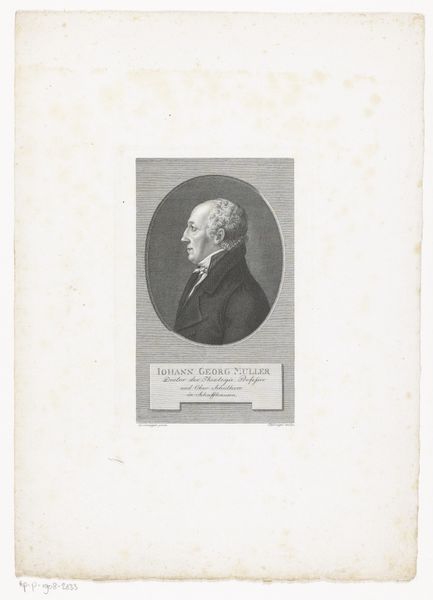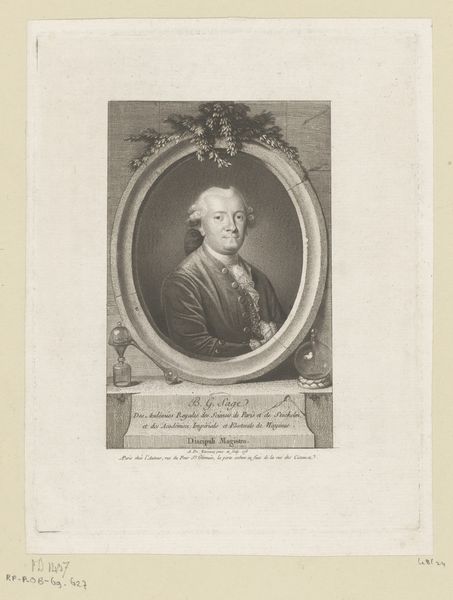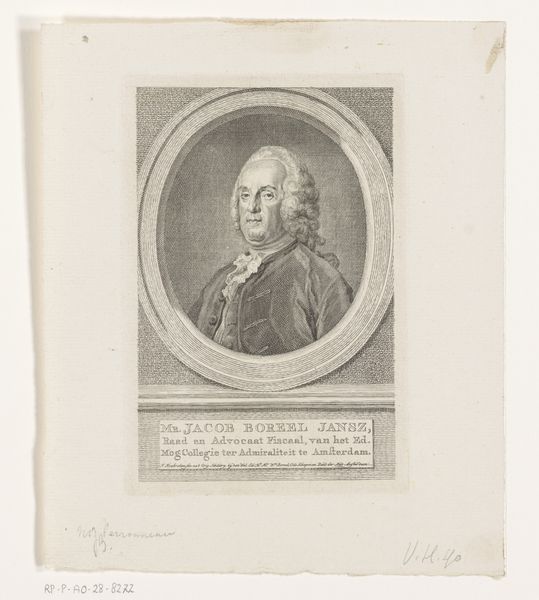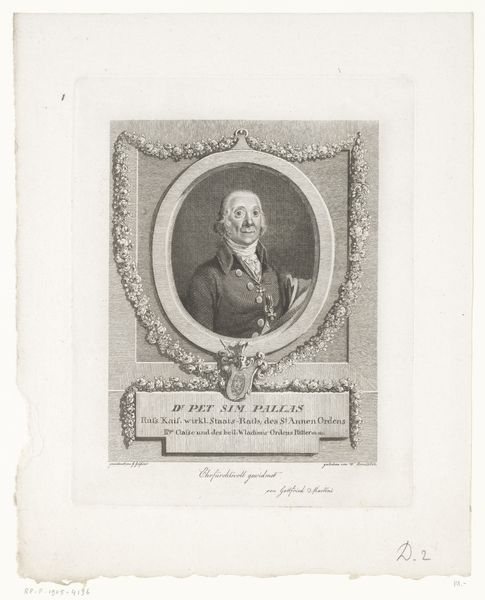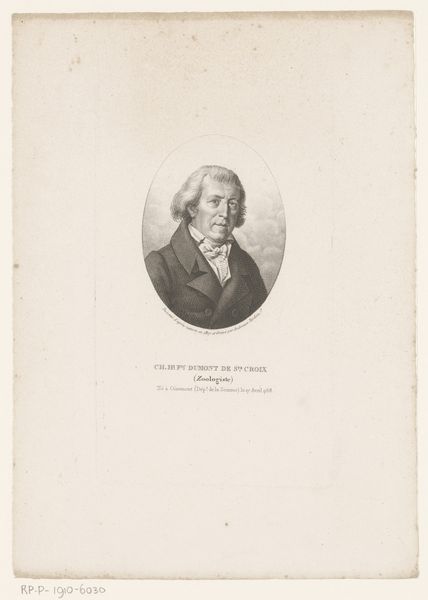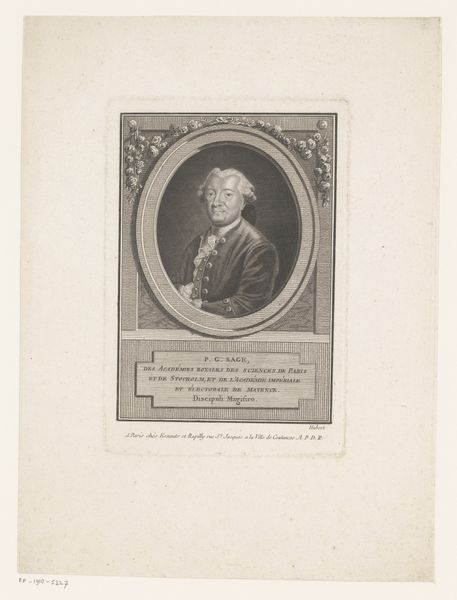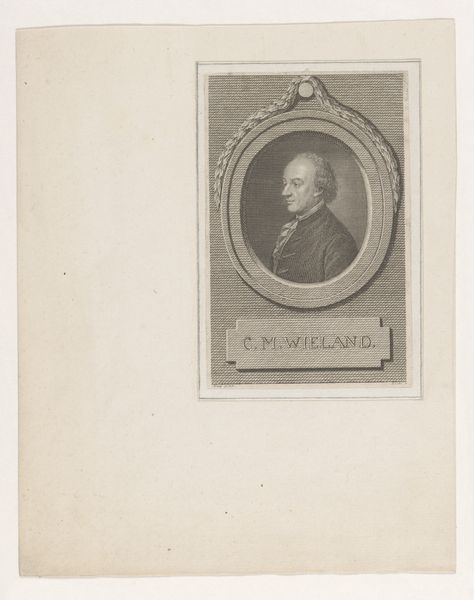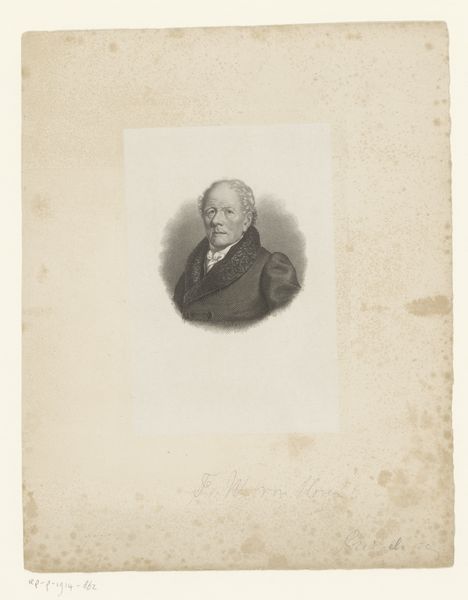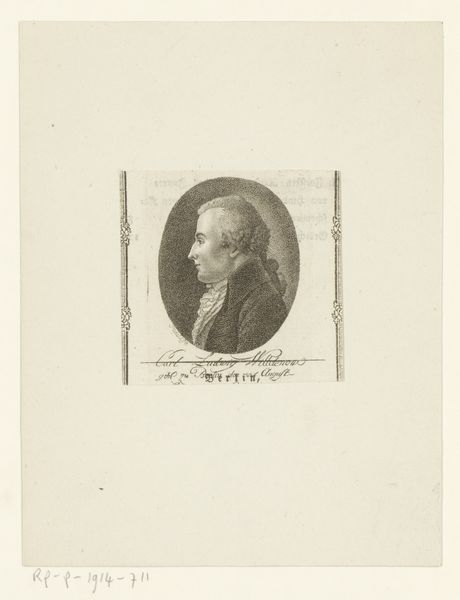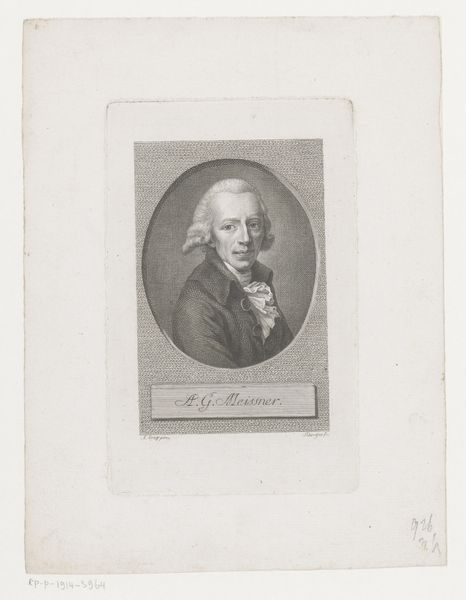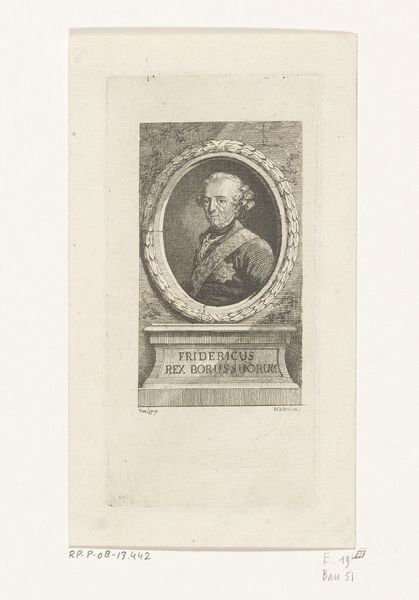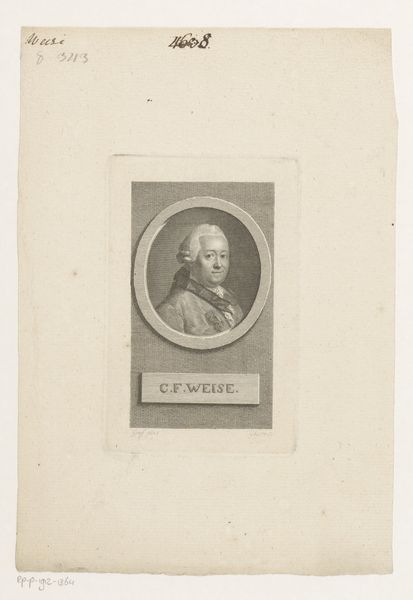
drawing, print, paper, engraving
#
portrait
#
drawing
#
neoclacissism
# print
#
old engraving style
#
figuration
#
paper
#
form
#
line
#
history-painting
#
academic-art
#
engraving
#
realism
Dimensions: height 157 mm, width 97 mm
Copyright: Rijks Museum: Open Domain
Curator: Let’s discuss this engraving. Daniel Nikolaus Chodowiecki created this print, "Portret van Otto Christian Schoene," in 1793. It’s currently held at the Rijksmuseum. Editor: It strikes me as quite formal, almost austere. The subject is framed by a detailed wreath and ribbon, lending it a neoclassical feel. There's a clear sense of order, even with the ornate details. Curator: Indeed, Chodowiecki worked within the artistic conventions of his time. The work adheres to Neoclassical ideals. Look at the precise lines and the idealized portrayal, reflecting a desire for clarity and order in a period of considerable social upheaval. The framing with a wreath and dedication were also markers of status. Editor: The inscription beneath the portrait identifying Schoene as a Senator points to the importance of societal roles and status within the artwork. Do you think there's a deeper commentary on power embedded here? How are we meant to consider Senator Schoene in his time? Curator: Absolutely. Consider the broader political context; this was shortly before and during the French Revolution. While overtly it presents a respectable senator, these types of portraits were often commissioned to present a certain ideal or legitimize power structures. Editor: It's fascinating how an image, seemingly simple at first glance, can carry so many loaded messages and cultural meanings from that historical moment. Is the use of engraving, as opposed to painting, perhaps making a statement about access or distribution of imagery? Curator: That's a great point. Engravings were reproducible; they democratized portraiture, in a sense. Instead of being confined to the elite, likenesses and their implicit ideologies could circulate more widely, shaping public opinion or solidifying an individual's legacy. Editor: So, while the style reflects neoclassical ideals of order and status, the medium itself hinted at a changing world and possibilities for broader communication and influence. What began as an austere portrayal reveals a nexus of artistic, social, and political forces at play. Curator: Precisely. Chodowiecki's print offers us a lens through which to understand the intersection of artistic style, social status, and the changing dynamics of power during a transformative era. Editor: It seems even the most seemingly simple artworks are far more interesting and multi-layered than one would expect.
Comments
No comments
Be the first to comment and join the conversation on the ultimate creative platform.
